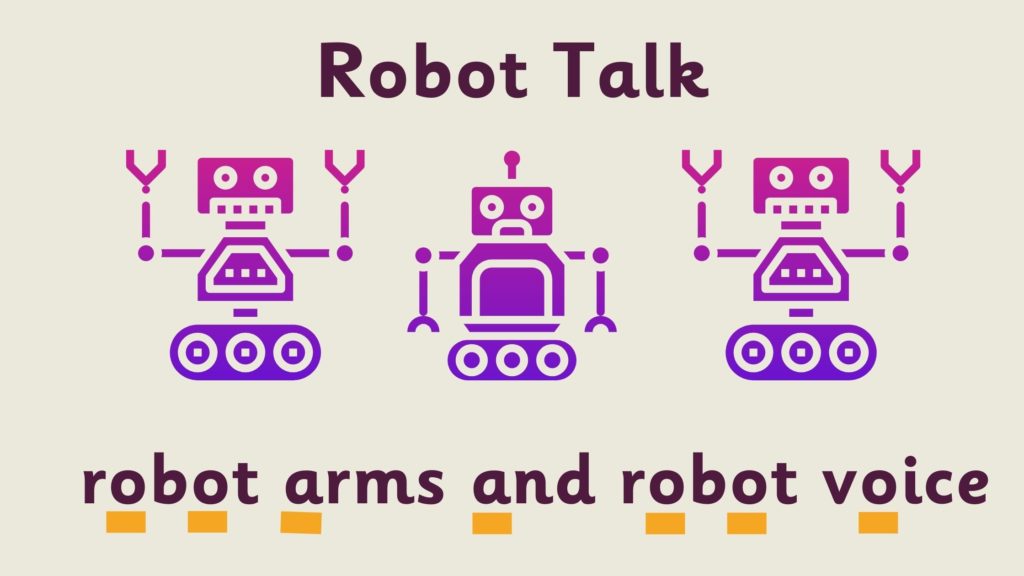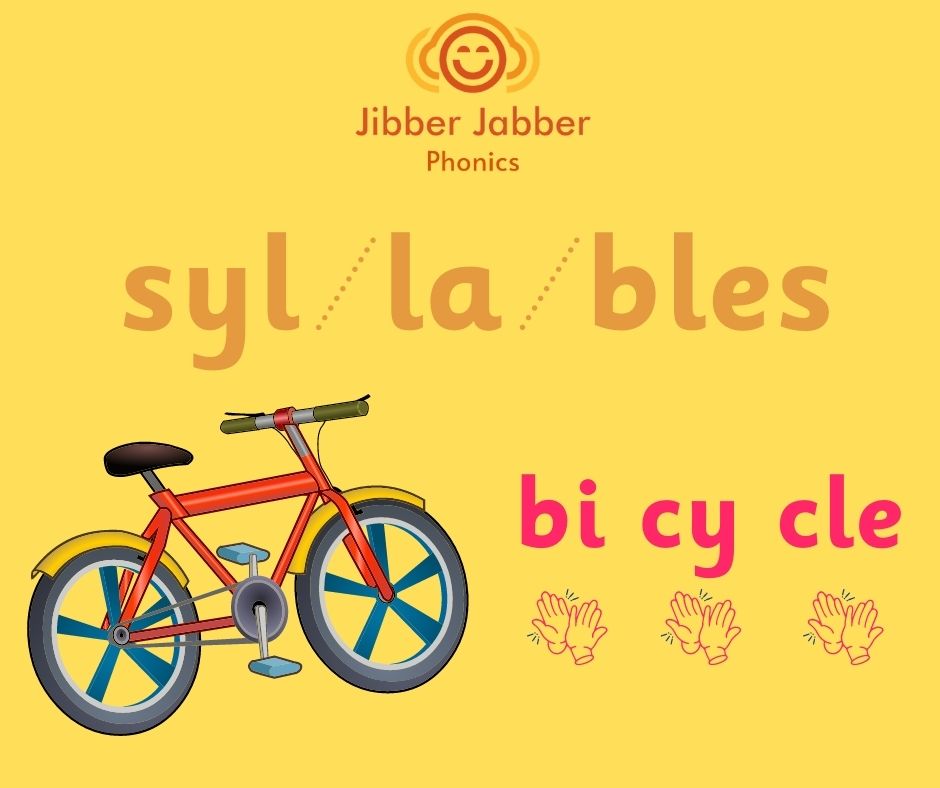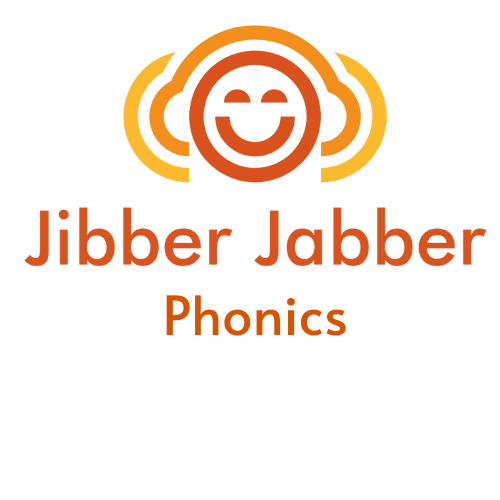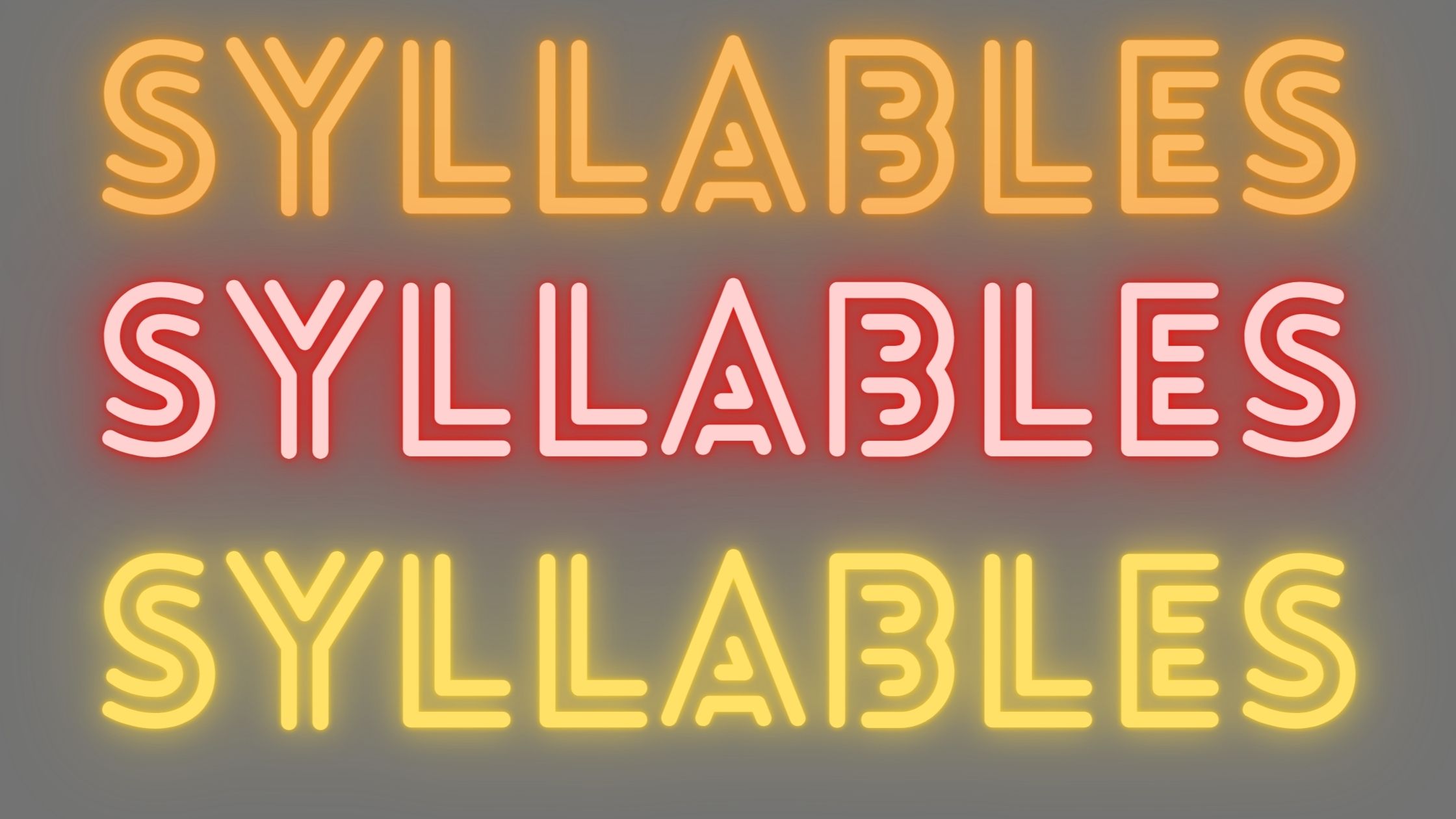What is a Syllable?
A syllable is a single sound or a beat in a word. Learning about syllables shows a learner that words are made up of units of sound. These units of sound are syllables. Understanding syllables will improve reading and spelling skills especially when words become longer.
To start finding beats in a word, count the vowels or vowel sounds and you will find how many syllables there are in that word. Example: ‘sit’ has one vowel /i/ therefore, one syllable.
The word ‘disagree’ has four vowels, two short (/i/, /a/,) and one long /ee/ therefore, the word has three syllables.
Remember, we are teaching the sounds in a word and not how many letters the word has.
Five Fun Ways to Count Syllables.
There are several ways to help learners identify syllables in words.
Dividing the words into chunks helps learners to decode words for reading and spelling. Here are some that I use in the classroom.

Robot Talk.
I like to get the children to move like ‘robots’.
Use pictures instead of words in activities for younger and lower-level readers. When looking at a picture the children move their arms like a robot and speak in a robot voice. Using a robot voice will chunk the words into syllables.
Drumming the Word.
Learners can use a drum or drum on their desk to hear the beats in words.
Start with their names.
Making learning personal will make this fun for them.
Don’t worry too much about counting the beats. In the early stages it is more important that they know words have chunks.
Chin Bumps.
Learners rest the back of their hand under their chin. When they slowly say a word, their chin will touch their hand.
When they count the number of times their chin touches their hand, they are counting the syllables in a word.
Clap the Sounds
When clapping out syllables, hold your hands wide apart when you are saying the word.
Making a “big clap” helps to hear and count the number of syllables. Learners can do this in pairs. One claps out the word, their partner counts the claps.

Mirrors.
Another way to find syllables is to watch the shape of your mouth and each time learners change their mouth shape is a new syllable.
Holding a mirror in front of their face is a great way to get learners to see when this is happening.
Vowels in a Word.
These beats or syllables usually contain a vowel /a/, /e/, /i/, /o/, /u/ or a vowel sound, /ay/, /ee/, /ie/, /ow/, /ue/.
Vowel sounds in the English language can be made up with singles letters or a combination of letters and they can be long or short sounds.
- Single vowels are short sounds as in ‘kit’, ‘dad’, ‘pet’, ‘mop’.
- Two letters (digraphs) /ie/ a long sound, as in ‘tie’.
- Split digraph, /i_e/ a long sound as in ‘kite’.
- Three letters (trigraphs) /igh/ a long sound as in ‘high’.
Long and short vowel pronunciation.
In a nutshell, short vowels are pronounced the same as the letter sound.
Long vowels are pronounced the same as the letter name.
Short vowels are the most common vowel sound in the English language and these are often the first vowel sounds students learn. Here is a great song that has both the long and short vowel sounds.
I hope you found the activities listed in this article helpful.
What are some of your favourite’s ways to teach syllables? How have they worked for you?
If you enjoyed this article, share it with your friends and colleagues!


Great advice! Thank you for sharing
Thanks Coral. I really appreciate you taking the time to comment.